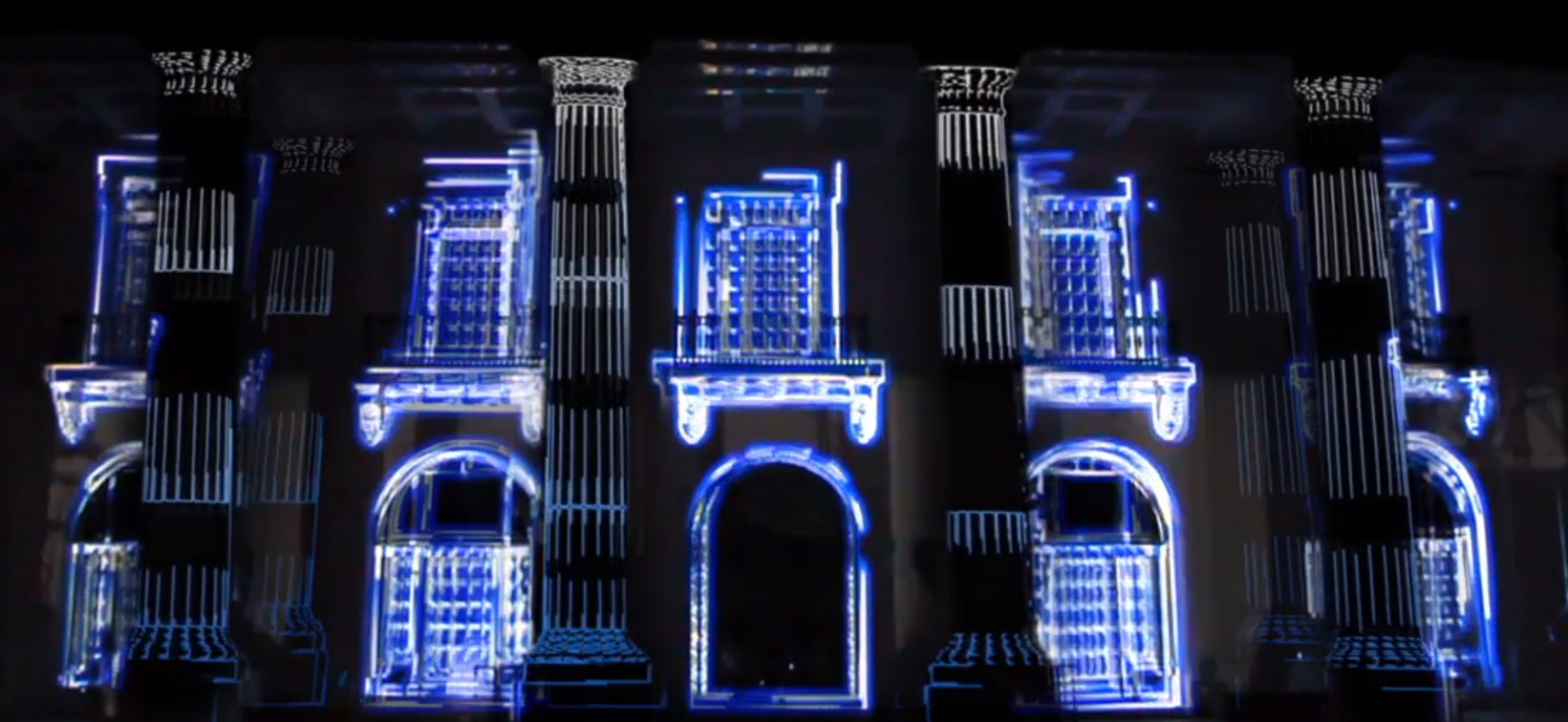Monster XP Blog
The Monster XP Guide to Projection

Whether for 3D building activations, touchless gestural experiential campaigns or simply to activate your retail boutique, Monster XP has seen an increased interest in projection systems lately. Our Vice President of Technology, James Laurino, shares some tips and considerations for your next projection activation.
Projection technology has advanced considerably over the last two decades. While many of our projects call for LCD displays or LED-based solutions, there are still plenty of reasons to consider projection for your next digital signage display… with some caveats of course.
Digital projectors offer some inherent advantages over the typical digital display that simply cannot be replicated easily with any other technology:
- The size of the display can be expanded to very large sizes with a single display unit.
- The display can be shaped to almost any design
- Infrastructure such as power, data, and mounting locations can be located a considerable distance from the actual viewed display area.
- The image can be warped and “mapped” onto three-dimensional objects such as buildings, statues, mannequins, and custom props.
- Projection screens can blend into existing environments with little disruption.
- Projectors can be paired with holographic films to create an impressive “holographic effect” at very large sizes and with far more simplicity than the recent advances of transparent LCD technology.
- When comparing the relative price per square inch of display, projection systems can be very economical while maintaining high resolutions.
In the past, and it remains the case today, the biggest drawback to a projection system is light control. Projectors, by their nature as a reflective display, are far more affected by the ambient light in the display environment than other types of technology. Higher brightness projectors and new high-gain, light-rejecting projection surfaces can mitigate the effects of ambient light, but careful consideration must be given for the best results. In areas with mainly artificial lighting, this can and should be controlled for the most effective display.
Most projection systems will not be any match for the sun. The light output from our life-giving star is surprisingly powerful and even with the strongest projectors today that output over 60,000 lumens, they can do little to overcome a projection surface in direct sunlight.
When considering a projection system and its location it is important to remember a few points of operation.
- The projector cannot display black. This is a simple physics issue; with projection systems, black is the absence of projected light. Say you have a nice white wall and want to put a projection on it, look at it under the current lighting. That color is what “black” will be in regards to the contrast of the unit. The darker that surface can be made, the better the contrast will be and the more vibrant your image will look. A simple lux meter can quantify this observation into a number that can be used to size the projection and screen.
- A projector’s light output is measured in Lumens. A lumen is a measurement of light output over an area. When a projector states it outputs “8000 lumens” of brightness, this is measured over an area of 1sq/m. Project onto an area of 2sq/m and you have halved your light output.
- Projectors are a two-part system comprised of both the projector and the projection surface. The projection surface, from which the projector’s image is reflected to the viewer, can make an incredible effect on the final image. Many styles of screens exist for many environments and the matching of the screen to the actual projector is an important consideration. To blend into their environments projection paints can be used for an invisible surface when the projector is off and in other cases screen frames can be customized to fit decor. There is a level of style capable with projector screens that LCD/LED can be hard to match.
Traditionally, projectors have been (and still are) primarily considered for applications where usage was limited. Conference rooms were a popular choice as a large display was useful for viewing, the ambient light was easily controlled, and the cost of a single projector and projection screen was much lower than an equivalent LCD or LED display. For displays that would be running in excess of 10 hours a day, many times projection would be ruled out due to the cost and inconvenience of ongoing maintenance. Mercury or Xenon lamped projectors could be expected to run for 1,500 – 2,000 hours per lamp or set of lamps. With lamps costing $200 – $600 apiece and replacement necessitated every 4 – 6 months at a runtime of 12 hours a day, annual operating costs could be high with some units needing 2 or even 4 lamps at a time. Integrated air filters would also need to be replaced regularly. Many projectors are also ceiling-mounted and not easily accessible for service, many times requiring a lift for maintenance.
With the advent of laser-illuminated projectors, projection is now very comparable with alternative LCD or LED displays on the maintenance front. Typical laser units can be expected to maintain their brightness for 20,000 hours and can continue to operate beyond that which puts them on par with many LCD displays. With these laser projectors, many manufacturers are now producing “maintenance-free” units that do not include air filters or lamps as part of their projection system, making projectors a viable choice for many digital signage circumstances. In fact, for many creative applications, projection systems are not only the best choice, but the only one.
We’d be happy to share more details on projection systems. Please feel free to reach out to us at info@monsterxp.net to set up a call.
